Nicole Campbell woke one day to learn she no longer had a right leg.
The entire leg—ankle, shin, knee, thigh, even the hip joint—was gone.
As she lay in her bed at Spectrum Health Blodgett Hospital, her parents tearfully explained that they had authorized the amputation.
Nicole, a 31-year-old teacher, asked if there had been any other option.
Only death, her mother explained. Without the operation, an infection in her leg would have killed her.
“I would much rather be alive,” Nicole said matter-of-factly. “I can live without a leg. I can teach without a leg.”
In that moment, the devoted teacher became a dedicated student. With the eagerness of a star pupil, Nicole tackled the job of learning how to adapt to life with one leg.
Her goal: to get back to the classroom. To return to the job she loves.
Six weeks after her surgery, Nicole transferred to the Inpatient Rehabilitation Center at Blodgett Hospital. Her body had largely healed from the amputation and skin graft. Now she plotted her return to daily life.
Sitting, standing, getting dressed―activities once done without a thought―now loomed over Nicole’s life like mountains. With help from her therapists, she crafted strategies to climb one after the other, focusing on each small step while keeping her eyes on the big goal.
Her students, though miles away, always occupied her thoughts, feeling as close and constant as the quilt that hung in her room. Each square contained messages from a student or colleague of support, hope and encouragement.
There were moments of frustration. And one night, she broke down, feeling overwhelmed by the challenges she faced.
But overall, Nicole approached rehab with a dogged tenacity. And humor. If you doubted that, you just had to look at her T-shirts, specially ordered for this battle.
‘You can let go’
One spring afternoon, Nicole wheeled into the therapy gym wearing a shirt that read, “I said stop pulling my leg, but it was too late.”
Physical therapy assistant Ashlee Connell prepped her for a big milestone: standing on her own, aided just by a walker.
Connell and another therapist stood on either side of Nicole. On the count of three they helped her rise. Nicole grasped the arms of the walker, balancing on her left foot.
“You can let go,” she said. “I’m good.”
She looked around the gym, a big grin on her face. For the first time in nearly two months, she was standing upright, holding her own weight. She called out to other therapists as they passed by and they cheered her on.
“I feel really good,” she said. “I’m barely holding on to the walker.”
“That’s awesome,” Connell said.
My challenge is to get well and get going so I can live whatever plan (God) has for me.
As Nicole practiced sitting and standing several times, Connell told her they would move on to the next step soon: standing and pivoting to move from one chair to another.
Nicole nodded, ready for the challenge.
A rare, chronic illness
Nicole brought to her rehab journey an uncommon toughness, born from coping with the pain and uncertainty of a rare, chronic illness.
As a child, growing up outside Hastings, Michigan, she played sports, but she fell easily and often got hurt. It didn’t take much to make her knees pop out of joint.
“I was clumsy,” she said. “I hurt myself. I spent a lot of time on the bench.”
Problems with her muscles and joints grew worse in her 20s. For most people, a dislocated joint is a rare and excruciating experience. For Nicole, it became so common, the pain barely registered. She just popped the joint back in place―or made a trip to the emergency department if she couldn’t manage it herself.
Around age 28, after many trips to hospitals and specialists’ offices, a doctor identified the source of her problem. She had Ehlers-Danlos, a connective tissue disorder.
“It causes my skin and other connective tissues to be extra stretchy,” she said. “My joints will dislocate on their own.”
A year later, she learned she also has mast cell activation syndrome, the cause behind her intense allergic reactions. And she also discovered she has postural orthostatic tachycardia syndrome, which can cause her blood pressure to drop and her heart rate to rise upon standing.
Testing showed the three conditions may be connected through a genetic disorder called hereditary alpha tryptasemia syndrome.
While glad to see researchers are focusing on this condition, Nicole meanwhile has found ways to cope with symptoms in her daily life.
She gets physical therapy to train her muscles to stabilize her joints. And she receives acupuncture to help with the pain.
On March 30, 2018, she was getting into her car when she heard a pop. She figured her hip or knee had moved out of alignment. She moved her joints back in place.
Later, she felt pain in her thigh but saw no sign of a bruise or cut. That pain eventually grew so terrible, she went to the emergency department at Spectrum Health Pennock. From there, she transferred by ambulance to Spectrum Health Blodgett Hospital.
When she arrived, a bruise was rapidly spreading over of her thigh and down her calf. She was in septic shock, caused by an infection she believes started deep in her leg.
Surgeons tried cutting away infected tissue. But on April 1―Easter Sunday―the medical team told her parents, Val and Dick Campbell, the only chance at saving Nicole’s life involved amputating her leg.
“I cried,” Val said. “I made her dad sign the papers.”
Nicole saw it as one more health challenge she would face―and overcome―relying on faith.
“If God was going to take me, he was going to take me,” she said. “The fact that he didn’t, and that he took my leg, there must be a reason and a plan for that. My challenge is to get well and get going so I can live whatever plan he has for me.”
Back in the classroom
Ten weeks after she lost her leg, Nicole drove her electronic wheelchair out the hospital doors and into an ambulance cab. Her destination: Dunlap Elementary, the Battle Creek-area school where she teaches fifth grade.
This was a test run, conducted with recreational therapist Shanon Haskins and physical therapist Linda Rusiecki, to see what accommodations Nicole would need to navigate the halls and classroom. And it gave her a chance to surprise her class.
She sat in her wheelchair in the center of the room as students filed in. They stopped, stared open-mouthed and then crowded around her with smiles, hugs and a few tears.
They settled into their spots on the rug, and Miss Campbell went into full teacher mode.
“What questions do you have for me?” she asked.
A boy raised his hand. “I was wondering, does it feel weird without that leg?”
“Yeah, it does feel a little weird,” she said. “Because you think, I’ve always had two legs. And they have these things called phantom sensation, so sometimes it feels like my leg is there. It will hurt sometimes like I have a cramp or an itch, and then I’ll think, ‘Oh, it’s not there.’ It can sometimes be really weird.”
The kids asked if she was scared when she learned about the amputation.
“I wasn’t scared by it because it saved my life,” she said. “I can do everything I could do before. I just have to figure it out.”
She showed the students the “grabber” she uses to reach items up high. She demonstrated how she tilts her wheelchair back to relieve pressure on the amputation site.
Introducing the therapists, she encouraged the kids to ask questions about their jobs.
She’s a miracle girl. God’s got her. God has been touching her since day 1.
School staff had already rearranged her classroom to make it easier to navigate by wheelchair. As she toured the halls, principal’s office and staff lounge, Nicole brainstormed with the therapists and colleagues to make sure she could perform everyday tasks—like using the copy machine—needed for her job.
She never made it more than a few feet without greeting a friend or student eager to give hugs and welcome her back.
“It’s neat just to see the looks on the children’s faces,” said principal Sarah Neubecker. “They have been so worried about her. To see her active and able is truly a relief to them.”
At the end of the visit, Nicole wheeled out of the school, tired but happy.
“I miss these kids,” she said. “I feel better now.”
And for her mother, the day brought a mixture of relief and hope. Despite her daughter’s upbeat attitude, Val worried about how she would make it back to the classroom.
“I wasn’t really sure how she was going to be able to maneuver the school and the kids,” she said. But seeing Nicole manage it all made her realize: “She is going to get her life back. And she is going to be able to do what she loves. Teaching is her life.”
Preparing to go home
Already a determined rehab patient, Nicole kicked it up a notch after the visit to the school.
A few days later, she wheeled into the therapy gym, eager to check off the skills needed for graduation from the program. Her T-shirt read: “The only disability in life is a BAD attitude.”
Rusiecki taught her to use a board to slide from the wheelchair to a bed and back again. She transferred into a car, slid across to the seat and transferred out of the car to her wheelchair.
“Yay!” she cried, a fist raised over her head.
With her discharge from inpatient rehab in the near future, she prepared for the new challenges that would come as she adjusted to life at home.
Again, she took a can-do, positive approach that impressed―but didn’t surprise―her parents.
“She’s a miracle girl,” Dick said. “God’s got her. God has been touching her since day 1. She has a mission, and she is witnessing to everybody.”
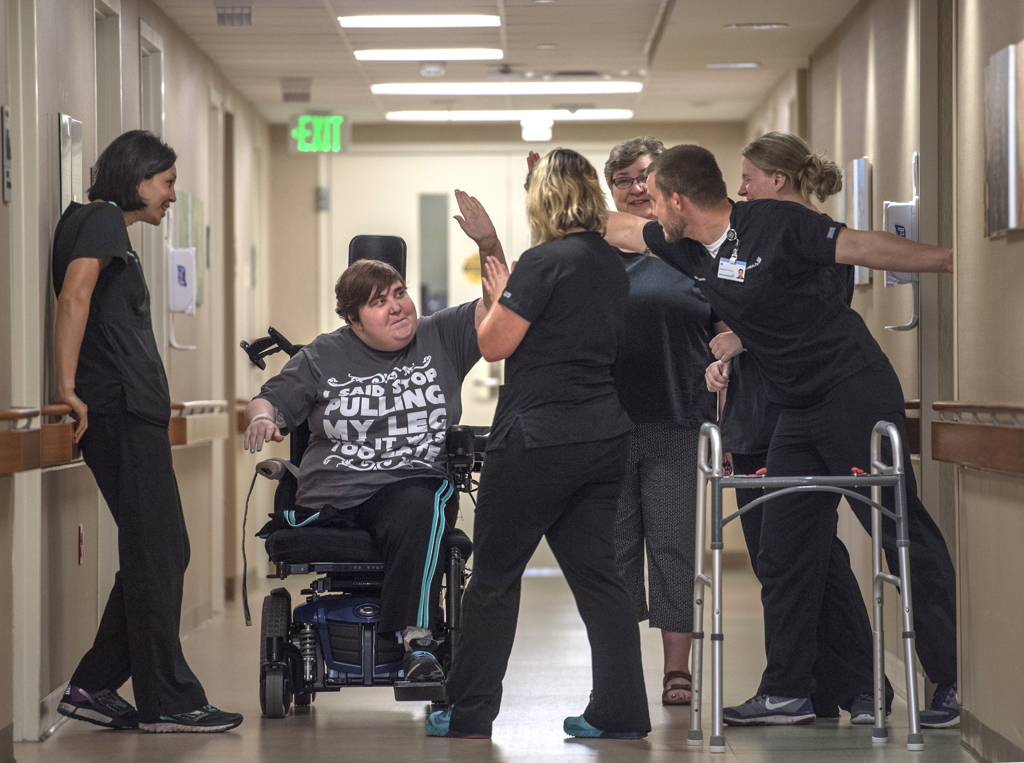
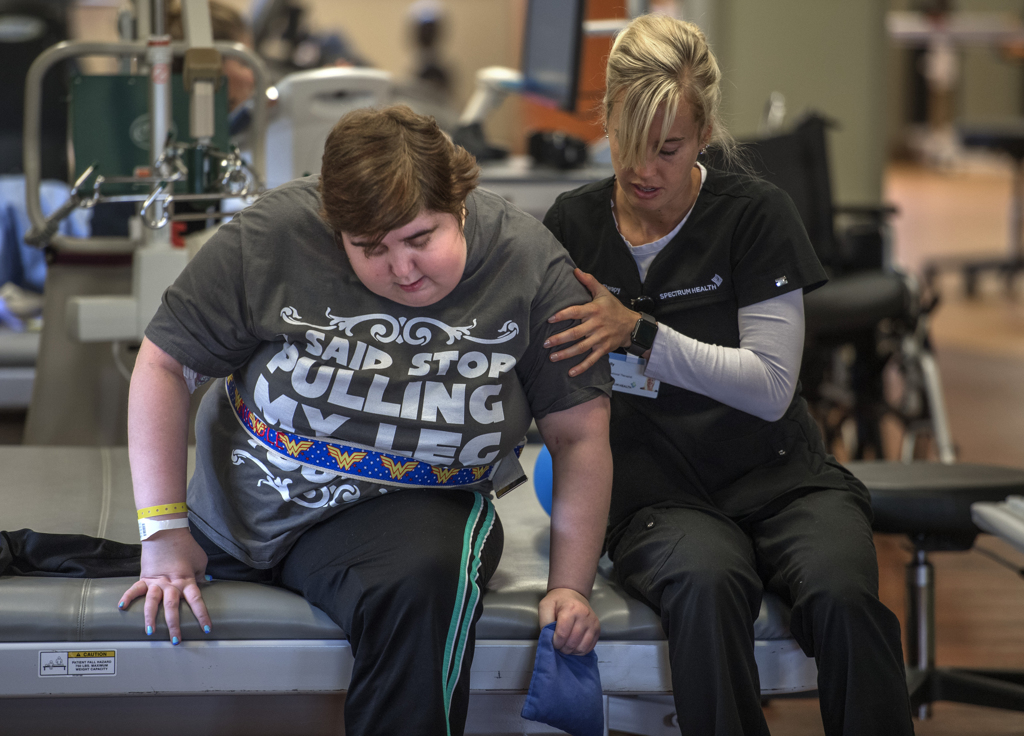
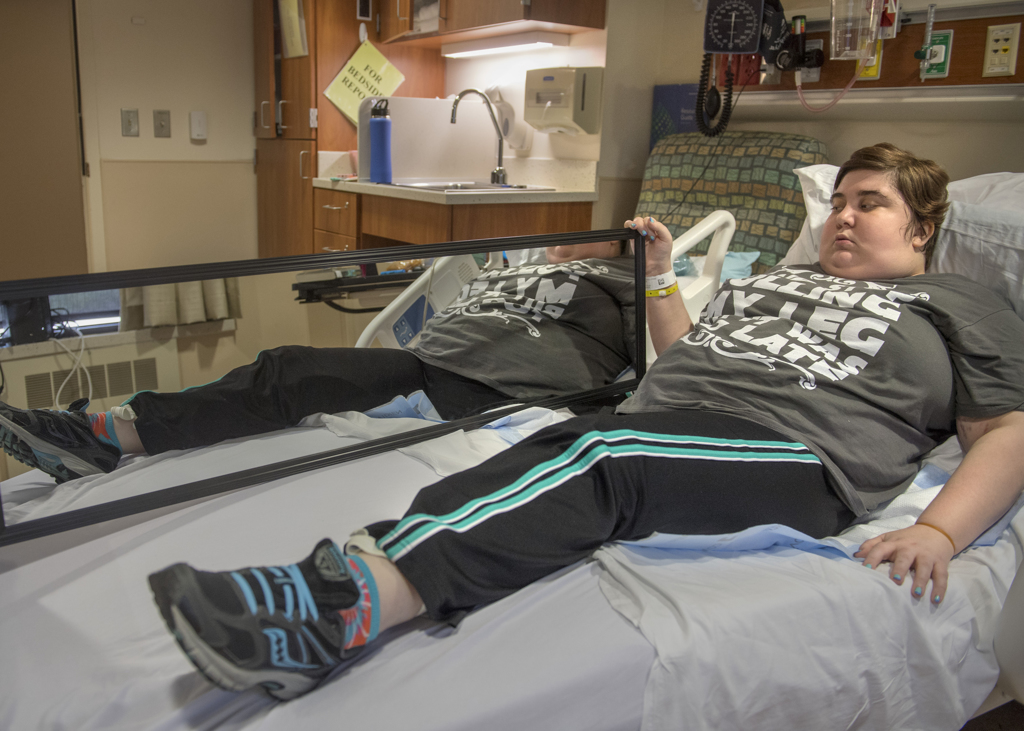
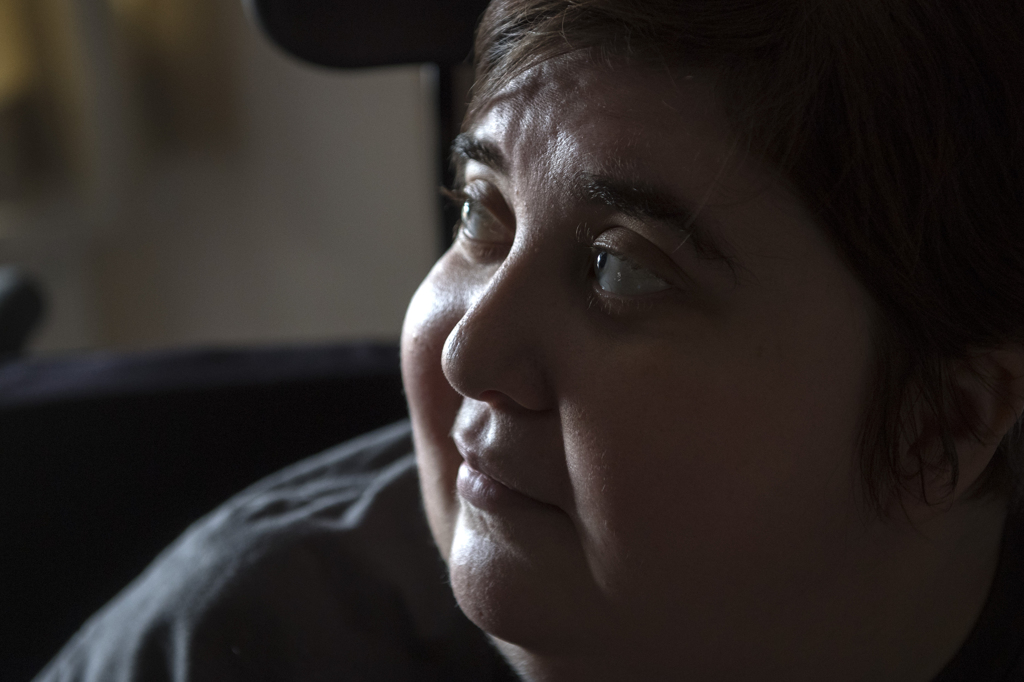
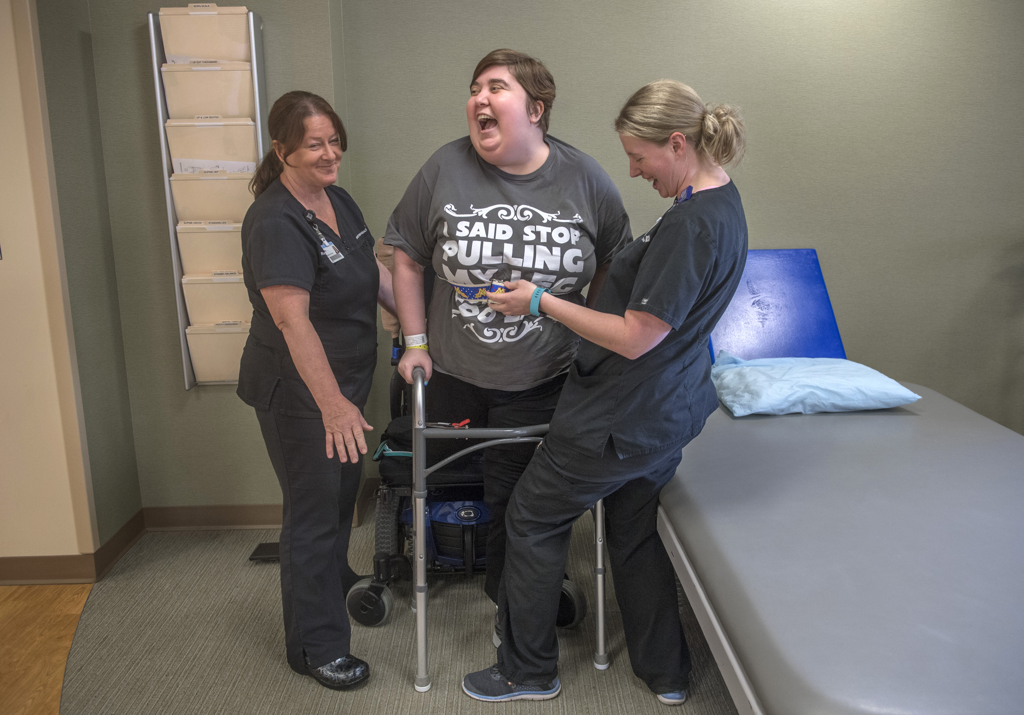
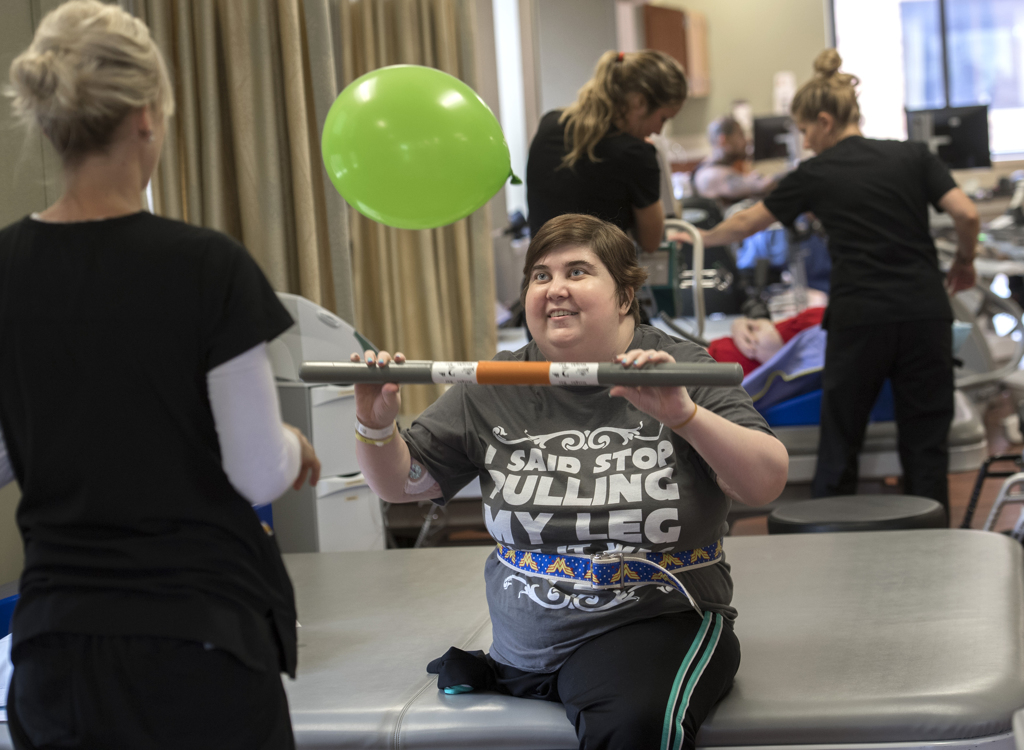
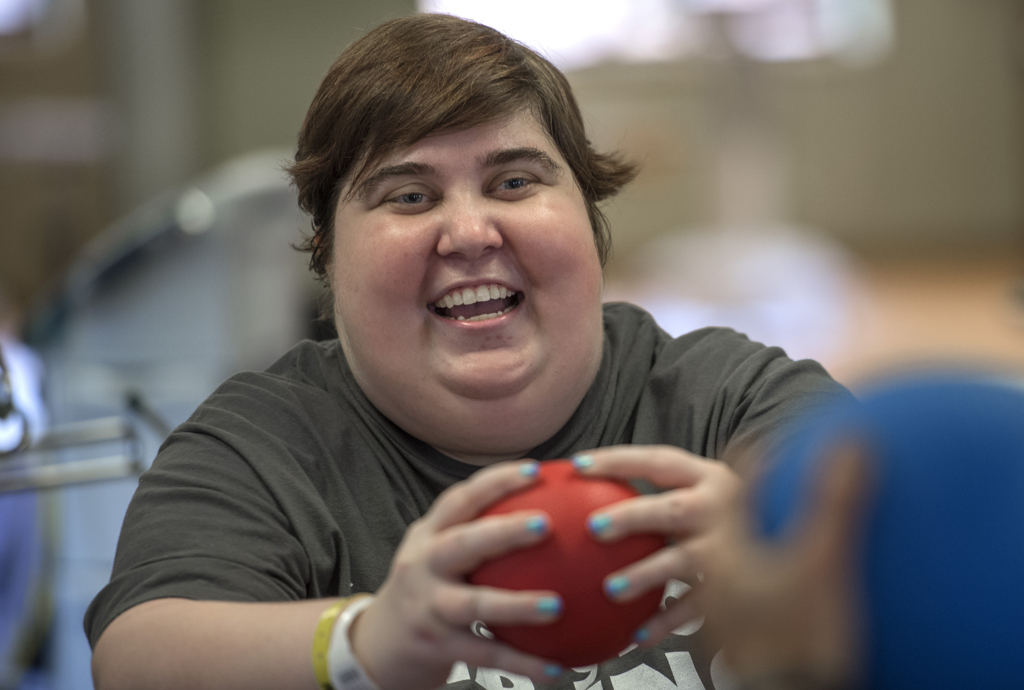


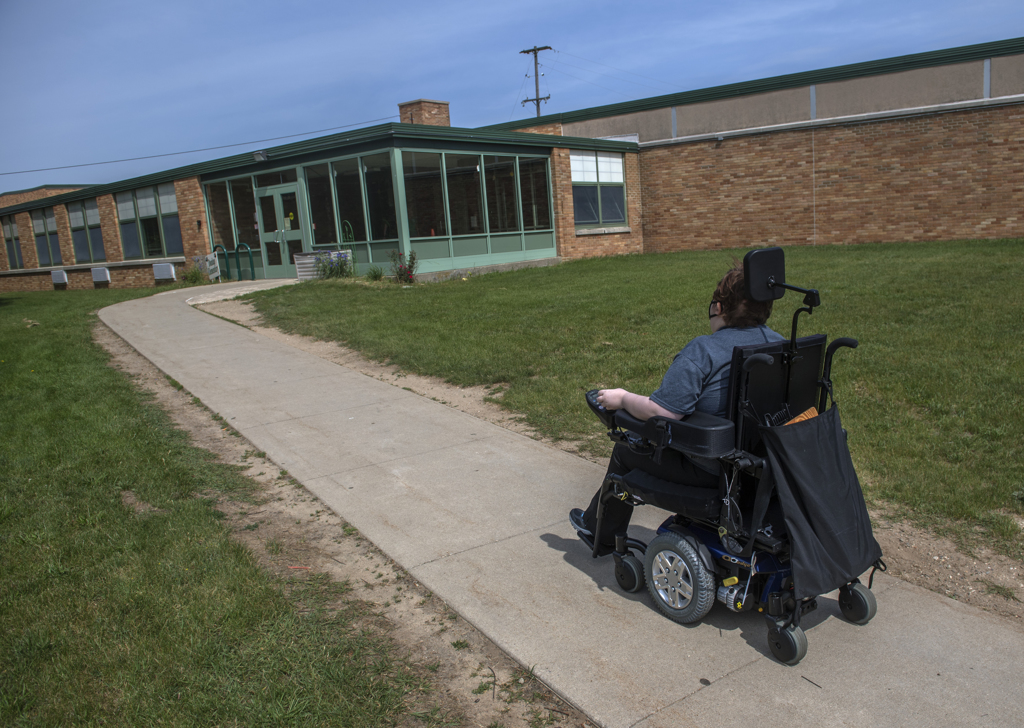
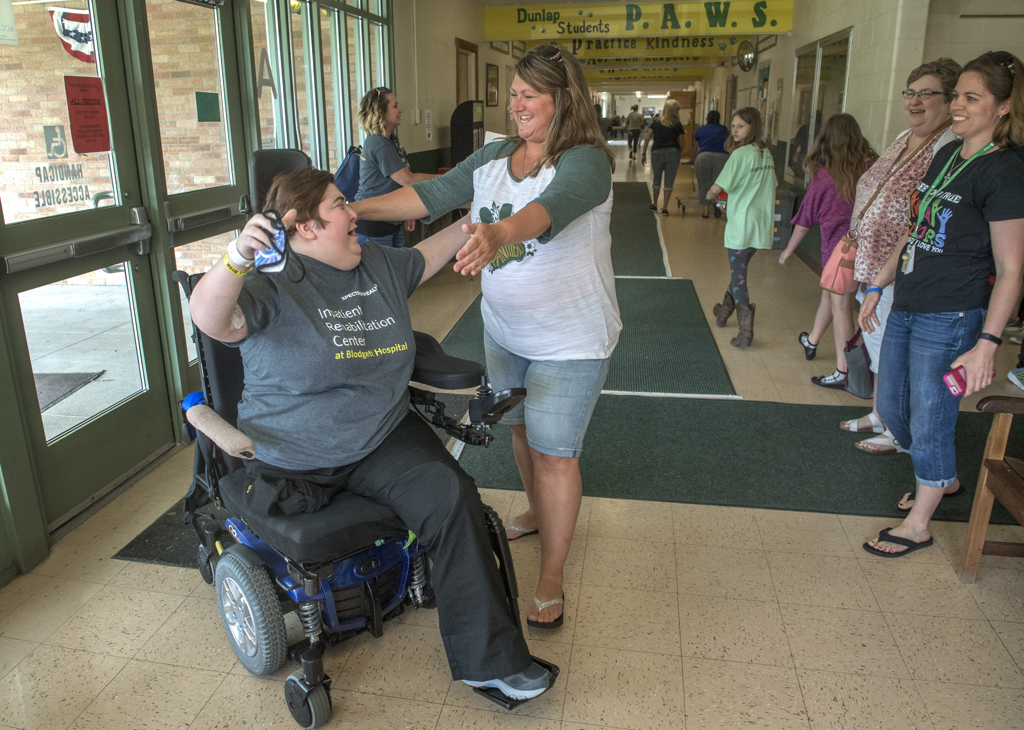
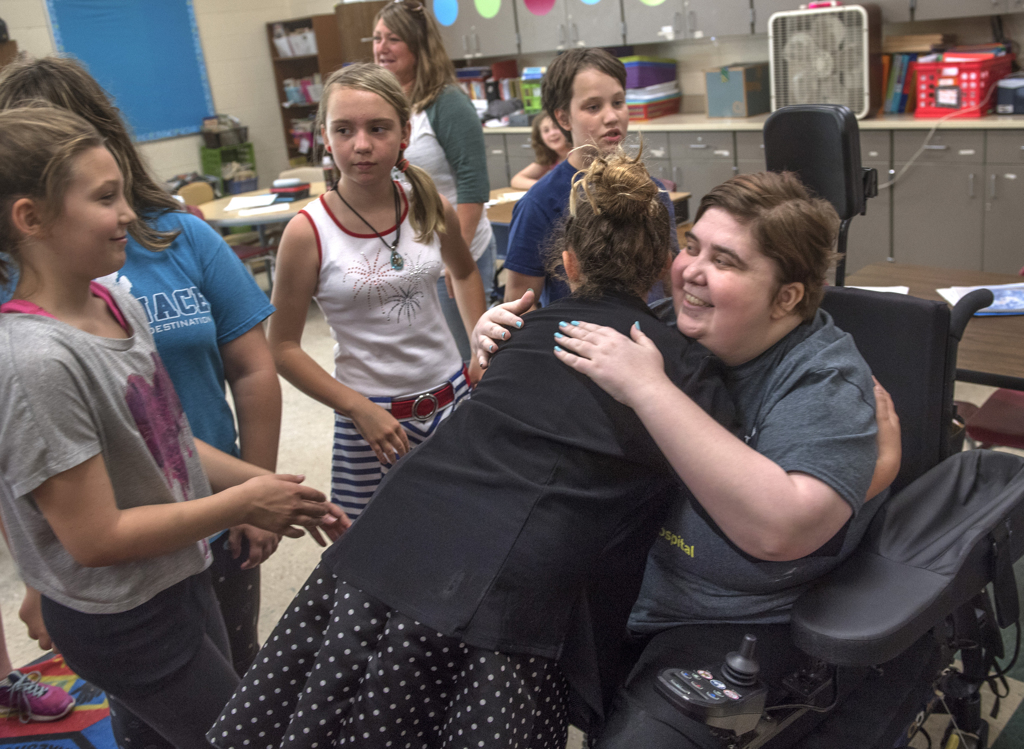
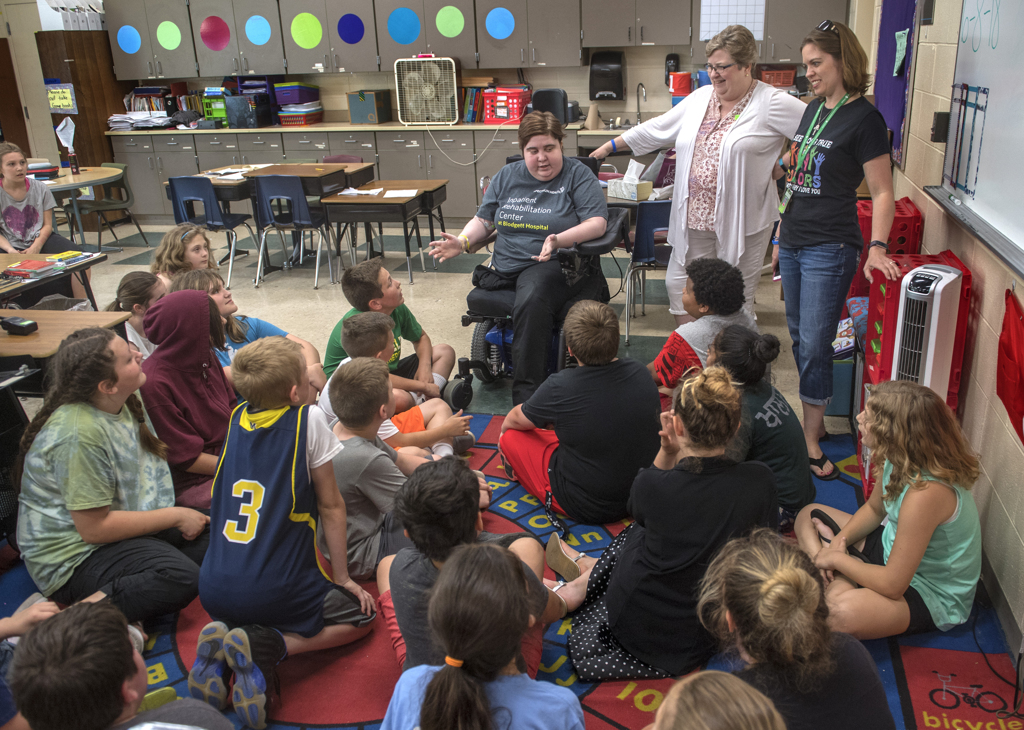
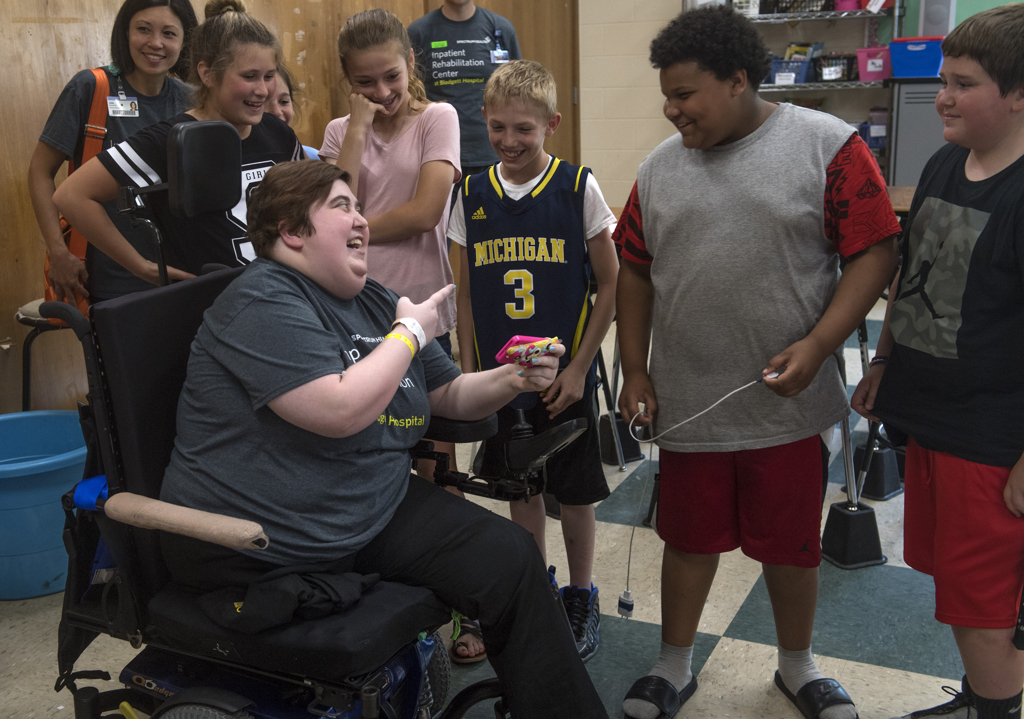


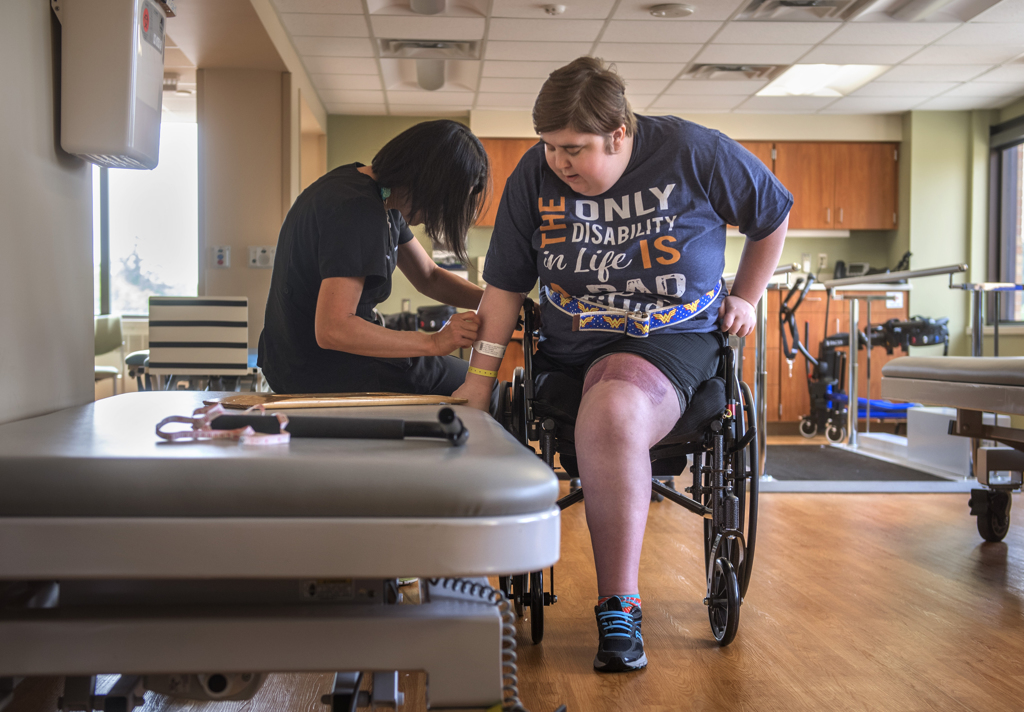
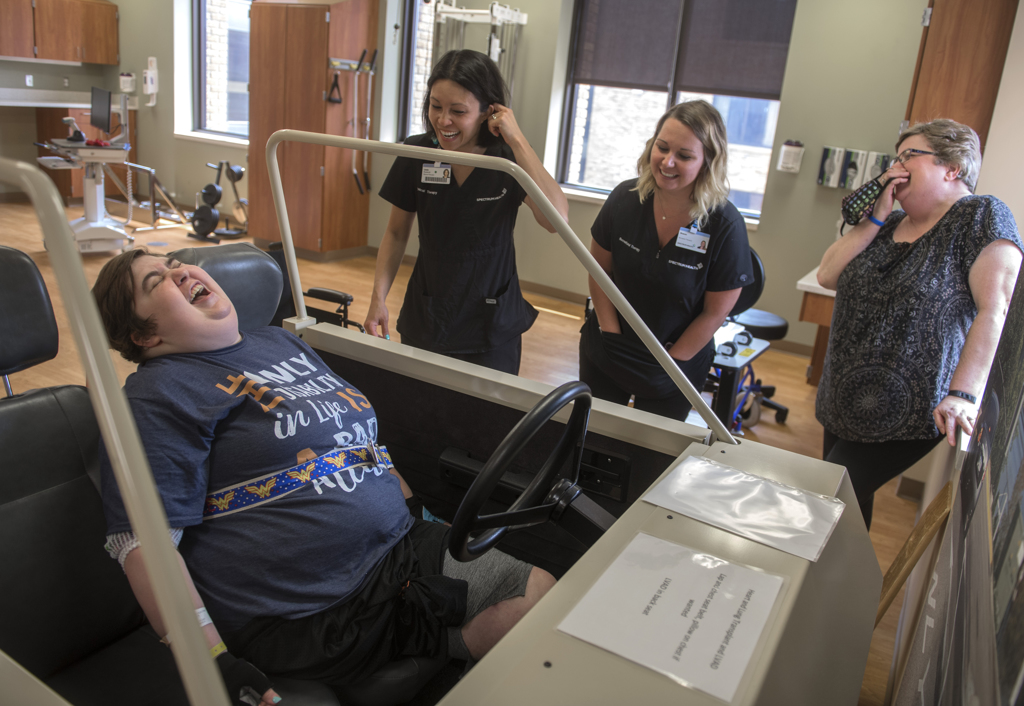
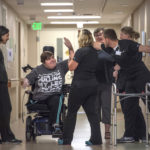
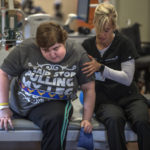
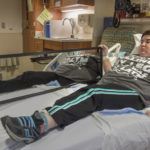

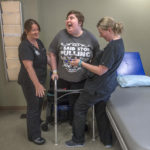
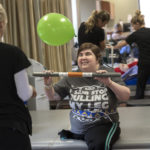
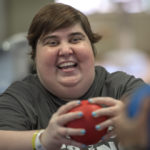











 /a>
/a>
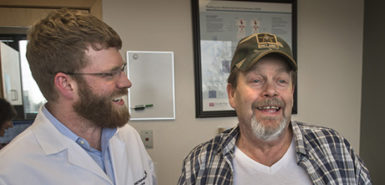 /a>
/a>
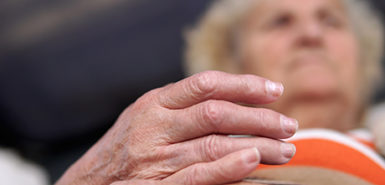 /a>
/a>
What it doesn’t kill you make you stronger!!! And she’s the perfect example!!!
Nicole has been an inspiration throughout this whole ordeal….her attitude has always been positive and upbeat! I have thought many times, If Nicole can see things through the lens of God, so can I! Her example of living life to the full is going to reach far and wide!!
Thank you, Lorena and Carol, for your awesome comments. Nicole is truly an inspiration!
WOW, what an inspirational life! Thank-you Nicole for your witness and clarity. Your upbeat attitude is amazing and the 5th graders you teach are blessed by you!
Nicole’s challenge has assured so many of The healing power of Christ … reflected through her doctors, surgeons, therapists, and ultimately through her trust that God will use all this to make a difference. Blessings Nicole.
What at inspirational story!! We are suspecting our daughter who is 17 might have Ehlers-Danlos Syndrome. We live in the same area and wondering who/where you got the diagnosis and doctors in the GR area or do we need to go elsewhere to pursue a diagnosis? God bless you as you contiue to teach and be an inspiration to those around you!